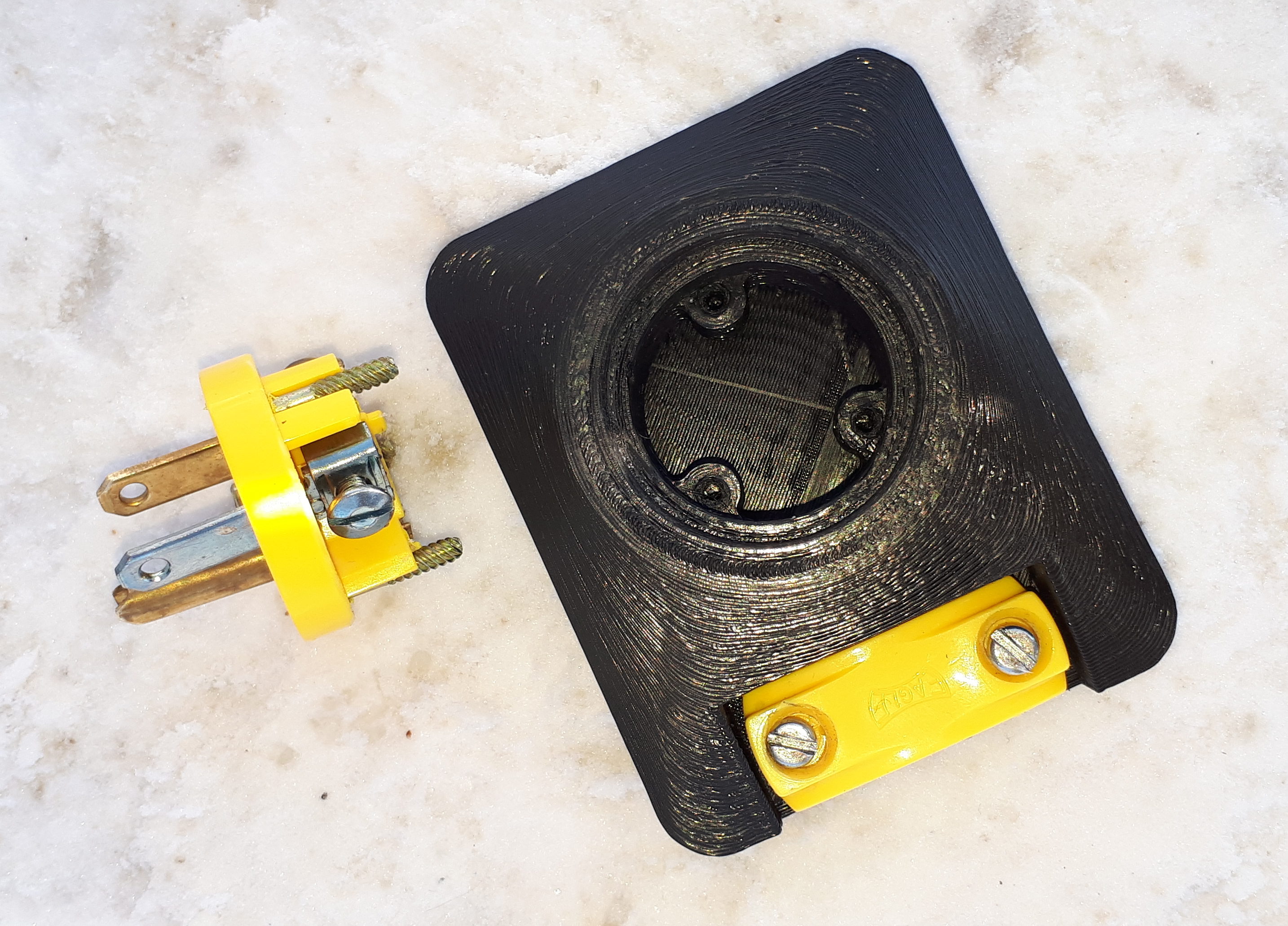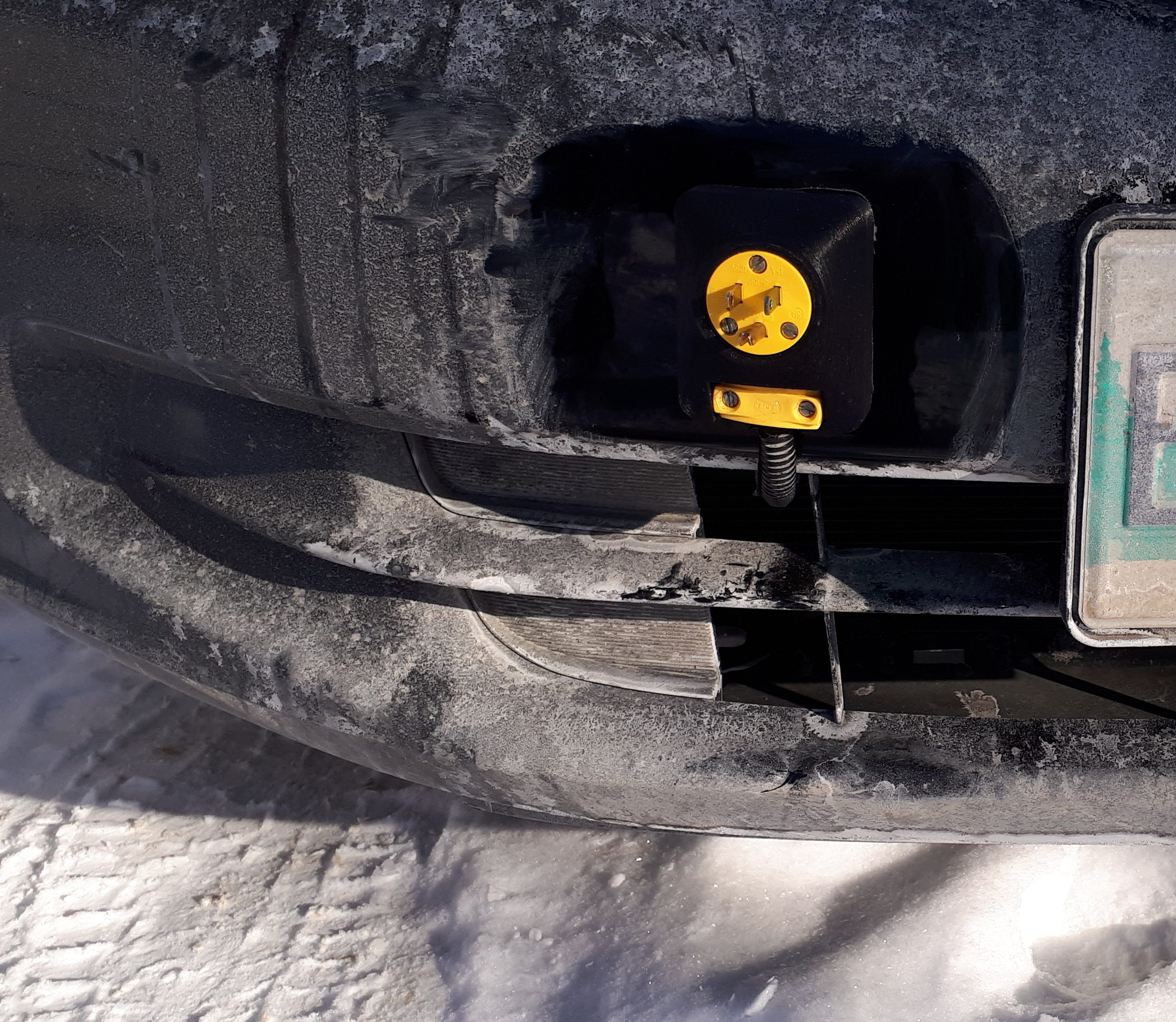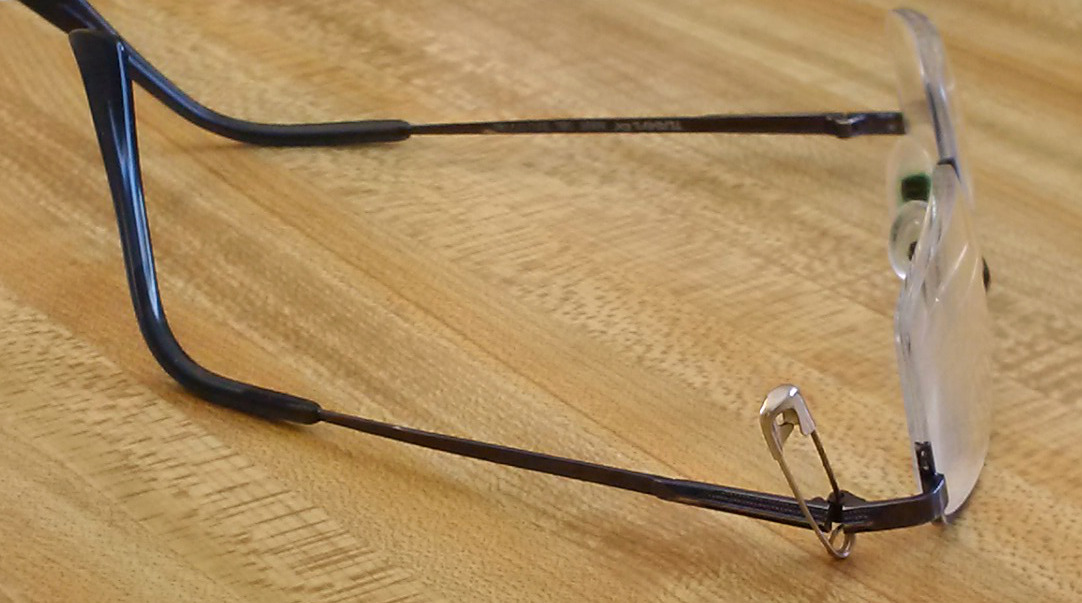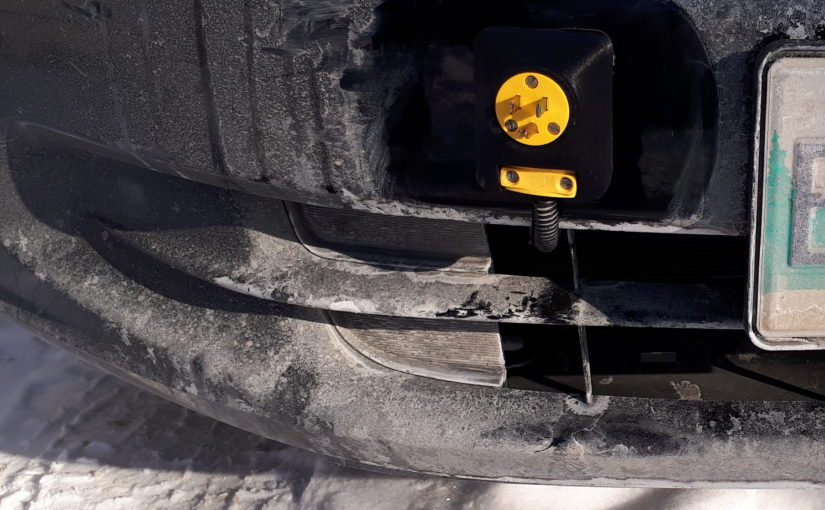In order to start after -30C nights most cars around here have block heaters. Usually the plugs hang out from a radiator slot or just from under the hood. So in that-30C you have to hold the male end and hold the female end while wrangling a -30C stiff cable, while wearing mittens if you have any sense. I wanted the cord to be a bit tidier on the car, and make it so that plugging in is a one-handed thing that can be done more easily with mitts on. So, I took an existing plug and build a  new body for it. I have done 3d modelling before, but this was my first exposure to Autodesk’s Fusion 360. It is the nicest 3d modelling software I have used so far – very easy transition from other tools I have used and it just works. I feel like a total sell-out to use it instead of an open source product like FreeCAD, but it’s like I tried crack, there is no going back.
new body for it. I have done 3d modelling before, but this was my first exposure to Autodesk’s Fusion 360. It is the nicest 3d modelling software I have used so far – very easy transition from other tools I have used and it just works. I feel like a total sell-out to use it instead of an open source product like FreeCAD, but it’s like I tried crack, there is no going back.
A friend 3d printed the model for me, we installed it on Friday. The temperature was only -11C and sunny, but with a bit of wind. It was not optimal for playing with small parts and bare hands, but we got it done. For now the setup works, but it will be interesting to see how well the body and the silicon glue pad I used to hold it on will hold up. Generally gluing things in -11C is not a good idea, but this pad did better than I expected. 
Category: Lifelong learning
Follow an RSS feed on any WordPress site
I use TinyRSS to do most of my daily web reading via RSS feeds. RSS feeds allow me to subscribe to most websites that use content management systems, such as WordPress or mediawikis. Usually there is a little icon for this , but some web sites and templates don’t include them.
To follow a WordPress site that doesn’t provide the link, manually set up a feed and put “/feeds” at the end of the site’s regular URL.
For example, to subscribe to
http://thewrench.ca
create a feed with
http://thewrench.ca/feed/
Removing hot glue with rubbing alcohol
Today I learned that you can remove hot glue with rubbing alcohol. Just drop or dab some around the glue, and then start pulling or prying it off. The alcohol seems to get between the glue and the substrate, it doesn’t dissolve the glue and make a mess of it.
Of course this makes hot glue that much more interesting for temporary fixtures or jigs…
Using wikidata to link to an article about a disease on wikipedia by ICD-10 code coded as property on wikidata
Wikidata is a sister project to Wikipedia that encodes much of the information on Wikipedia into discrete data values that can be queried.
I needed to document some ICD10 diagnoses and wanted to add links to Wikipedia as part of that. I did not know the actual names of the articles on Wikipedia, though. Manually, I could have found them using a search, but that would be a lot of work for >1700 diagnoses.
Turns out that Resolver will do this. The following link will resolve the ICD10 code (P4229) with value K37 (corresponding to appendicitis) to send me to the Wikipedia article for appendicitis:
https://tools.wmflabs.org/wikidata-todo/resolver.php?prop=P4229&value=K37&project=enwiki
You could use similar code to link to a city by postal code or an animal by its taxonomic name, or using any of the thousands of properties available on wikidata.
See here for an example on how to use this with semantic mediawiki.
Sichuan peppercorns
I read about Sichuan Pepper in Cooking for Geeks a long time ago. I have been wanting to try a dish with them for a long time. Recently there was a post on the Winnipeg SubReddit that mentioned that the Golden Loong restaurant uses them. Yesterday I finally got to try their Kung Pao Chicken with fresh sichuan peppercorns. The basic taste is lemony. More importantly, they are tingly and change the flavour of everything in the part of your mouth where they burst, including the water you drink after. Of the four of us there, one hated the sensation, one didn’t much like it, and the other two liked it at least for the intensity of the sensation. I’d have it again. Very neat experience, and one thing gone from the geeky bucket list :-)
Eyeglass repair with safety pin
Can’t take credit for this, but thought it was a brilliant alternative to duct tape.

electronic circuit simulator
I have messed around with electronics for a long time, but a lot of it is still a mystery. So, I was thrilled to realize that free, online circuit simulators exist. My favourite one is http://www.falstad.com/circuit/ . It gives examples of dozens of circuits, you can modify them, or you can make your own. Better yet, no login required, if you want to save your work it will spit it out as a text file you can import again later. Thanks, Paul Falstad & co, for putting this together and hosting it!
Freshly smoked HAM
I finished the HAM radio course.
My call sign is VA4THN. Any Monty Python fans out there?
Semantic Mediawiki for documentation
I support several Mediawiki web sites. One of the best features of the tool in my mind are categories. Something doesn’t have to be filed as green or round, it can be categorized as green and as round. Combined with hyperlinking it allows you to only write data in one place and then link and find it from anywhere.
Sometimes, though, you would like to be able to see the information in a different format. For example, you might have articles about individuals with contact information, but it would be nice to have a list of fax numbers to put over the fax machine. Generally that would mean maintaining a separate document and all the problems that come with maintaining duplicate information.
This is where the Semantic Mediawiki extension to Mediawiki comes in. It allows you to designate certain information on a page as attributes that can be accessed from elsewhere. For example, I can put a “faxnumber” attribute on every person’s page. I can then write a bit of code on a different page to do things like list all pages that have fax numbers, and their fax number. Of course when you update a fax number, the list is updated automatically.
The syntax to make all of this happen would be somewhat difficult to understand for most basic users, but some of the details can be hidden in templates so that all a user would need to do is copy the template use code from another page and update the parameters.
We have been using this for a few months now. If I actually want to change the usage of the parameters it takes some thought. We have about 10 people who regularly edit these wikis, and so far none of them have engaged with the guts of Mediawiki, and only some have used templates involving it without prompting.
So, Semantic Mediawiki is a powerful tool but will probably not work on any wiki without a champion that is willing and able to figure it out and make sure that, as information is added to the wiki, it is encoded into it.
Epidemiology of Healthcare Course
Auditing a course to tell me more about the databases of the Manitoba Centre for Health Policy (MCHP) right now. They essentially host a variety of Manitoba data sets that are combined to better understand population health. The data sets are huge both in that they contain most Manitobans and in that they stretch into areas like health, housing, education and also some stats can data. They also have a very handy free and online concept dictionary that explains some of the indices and acronyms used in that field.
As interesting as the course itself is the wide variety of people who are taking it: students, new people at MCHP, people who work with native, housing or education agencies and a few doctors. Half the course is spend discussing some of the reports MCHP has generated and there are always interesting perspectives around the table.
